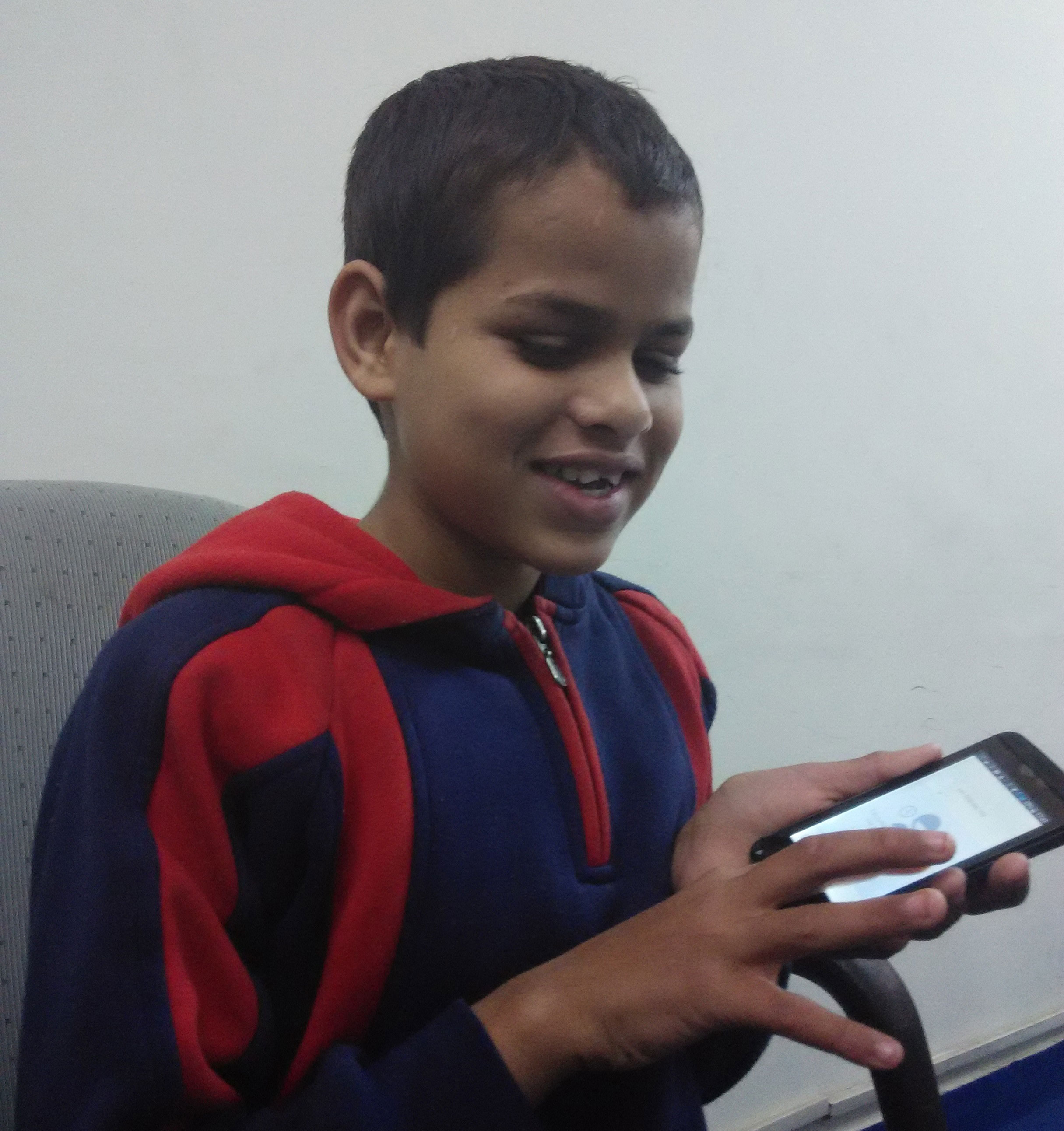Carnegie Mellon and Hear2Read Make Free Software Available
Carnegie Mellon and Hear2Read Make Free Software Available

A
visually impaired boy in India uses open-source software developed by
CMU and the Hear2Read project that converts electronic text written in
Indian languages into messages he can hear.
Millions of visually impaired people in India may benefit from
free, open-source software for Android devices that converts electronic
text written in Indian languages into messages they can hear.
The text-to-speech (TTS) software, developed by Carnegie Mellon University in collaboration with the Hear2Read project, can now be downloaded free of charge from Google Play.
Tamil is the first language offered, with subsequent releases of seven
major languages — Hindi, Bengali, Gujarati, Marathi, Kannada, Punjabi
and Telugu — expected over the remainder of the year.
Four out of
five people in India speak one of those eight languages. India has 22
official languages in all. More than 62 million Indians are visually
impaired.
"We're looking to create speech output for as many
languages as possible," said Suresh Bazaj, a serial entrepreneur in the
San Francisco Bay area and founder of Hear2Read.
TTS software is
commonplace in the United States and many parts of the world, but Bazaj
said good quality TTS for Indian languages is difficult to find,
difficult to use or unaffordable. Yet the need is great — only 10
percent of blind children in India get any education, and 90 percent of
visually impaired Indians live in poverty.
"Making it available as free, open-source software thus was a key goal," said Alan Black, a professor in the School of Computer Science's Language Technologies Institute
(LTI). "People should be able to download this and it should just work.
We put a lot of effort into making this accessible and easy to use."
Bazaj
met Black, a scientist internationally known for his work in speech
synthesis, through Alok Parlikar, a former student of Black's, two years
ago and recruited him to the project. While the LTI had a wealth of
knowledge and tools for creating TTS software, the Hear2Read project
inspired Black and his students to develop a system for doing so
repeatedly, efficiently and for producing user-friendly software.
"Each
language is different, and historically TTS systems have been done one
at a time," Bazaj said. "We looked at commonalities of Indian languages
and developed tools to apply the same technology to multiple languages."
The
system developed by Black's research team enables creation of a
baseline TTS system after recording 2–3 hours of clear, consistent
speech from a native speaker. The open-source text read by the speaker
comes from various sources such as Wikisource, books and periodicals. (Check out the video below.)
Though
the machine learning process used to create voice databases requires
large-scale computing, the resulting database for each language is
relatively small and can run on low-end Android phones or tablets that
retail for less than $100 (7,000 Indian rupees). That cost threshold is
within guidelines established by the Government of India's Assistance
for Disabled Persons program, which helps people with disabilities
purchase assistive devices based on income.
The conversion from
text to speech is done in real-time without internet access, as most
people in India either do not have continuous internet access or cannot
afford it.
The Hear2Read app works with the Android Talkback
accessibility option that allows people with low vision to use
applications such as web browsers, email, SMS (texting), phone calls,
word processors, spreadsheets and book readers.
For Bazaj, this
project has personal meaning. He has had retinal detachments in both
eyes that were successfully repaired. He was fortunate to have access to
excellent medical care, which is not the case for most people in India.
He believes the ability to read is directly related to a good quality
of life, and so his mission began.
"Like any startup, I jumped
into it not knowing how deep the pool was," Bazaj recalled. After
meeting Black, he began supporting a CMU student to develop TTS for
Indian languages. In addition, he has recruited more than 50 native
Indian speaking volunteers based in the United States and India.
"This
project couldn't have been accomplished without the dedication and
support provided by our selfless volunteers," Bazaj said. The San
Francisco Bay Area non-profits Access Braille and Indians for Collective Action have provided funding to support the project.
###
Carnegie Mellon University
is a private, internationally ranked research university with programs
in areas ranging from science, technology and business, to public
policy, the humanities and the arts. More than 13,000 students in the
university's seven schools and colleges benefit from a small
student-to-faculty ratio and an education characterized by its focus on
creating and implementing solutions for real problems, interdisciplinary
collaboration and innovation.
Hear2Read is
a volunteer organization dedicated to bridging the digital divide for
blind and low-vision Indic language populations. Our mission is to open
doors to all education, employment and business opportunities for the
visually challenged.
Video: https://www.youtube.com/watch?v=uy2iGCwmgbw&feature=youtu.be
Source: http://www.hear2read.org/press.php
For More Information:
Byron Spice | 412-268-9068 | bspice@cs.cmu.edu
